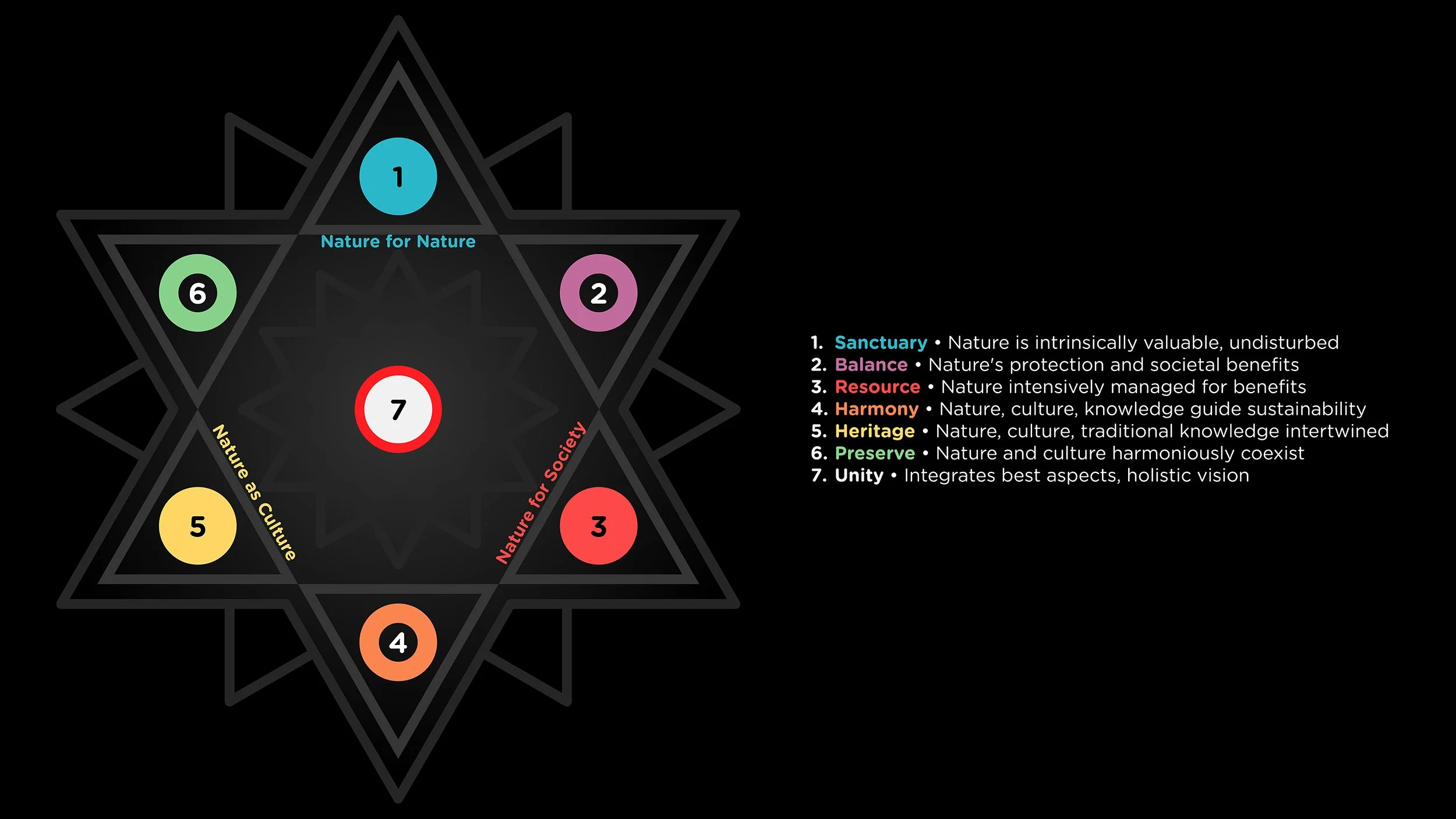
🌍📚
Planetary Education
Essential Common Knowledge for the 21st Century and Beyond
Planetary Education is a comprehensive, transdisciplinary educational approach that fosters a holistic understanding of the world and nurtures empathy, resilience, and adaptability in students, with the goal of equipping them to effectively address global challenges and contribute to a more equitable and sustainable future.
Image created with artificial intelligence.
Imagine a world where the education system is transformed to address the global challenges we face today through a heightened focus on planetary understanding and justice, preparing students to adapt, cooperate and thrive in the Anthropocene. Planetary Education, combining a broad understanding of humanities, social sciences, natural sciences, and the arts with a comprehensive understanding of Earth's natural systems and human societies, nurtures empathy, resilience, and adaptability in students, equipping them to effectively contribute to a more equitable and sustainable future.
Imagine all schools evolving into model institutions, sharing best practices and cutting-edge knowledge with children from a young age. In this vision, students of all backgrounds would have access to this fundamental knowledge, tailored to their unique contexts and established as a cornerstone of their education.
Bringing this vision to life will require reforms on multiple levels.
Revamping the Education System
Firstly, the education system itself must rise to meet global challenges by weaving planetary understanding and Liberal Arts principles into the fabric of all learnings, creating a new curriculum that is applicable to all levels. It involves the transformation of current course structures and the introduction of comprehensive interdisciplinary studies that give weight to our place within the global ecosystem.Transforming School Practices
Secondly, individual schools must evolve their practices to be more attuned to the planet. This could mean the integration of school gardens and innovative pedagogical approaches into every classroom, fostering direct connections with nature and hands-on learning experiences that enrich students' understanding of the world.Empowering Future Educators
Thirdly, the preparation of future teachers must incorporate these principles. We need to empower our educators with the knowledge and tools to impart Planetary Education, creating a generation of teachers who can instill in their students a deep understanding of our world and our shared responsibility to safeguard it.
Earth and Empathy
Planetary Education is built upon a dual-foundation strategy — Earth and Empathy.
The 'Earth' pillar engenders a deep understanding of our planet and its life systems, encompassing concepts of environmental emergencies and stewardship. It encourages awareness and responsibility towards the preservation of our shared home, equipping students to confront and address ecological challenges.
'Empathy', the second pillar, cultivates essential values for collaboration and coexistence. It fosters intercultural understanding, respect for past and future generations, compassion for all life forms, and a strong sense of justice and equity. It aims to nurture students into compassionate, fair, and globally-minded individuals. In a time when empathy is increasingly being questioned and criticized in public discourse — often inspired by the legacy of thinkers like Ayn Rand, who championed individualism over solidarity — it is more important than ever to affirm empathy as a vital force for planetary justice. Rather than diminishing it, we must strive to deepen and broaden our capacity for empathy across generations, cultures, and species.
Key concepts and ideas:
Foundational understanding of the world
Establishing a basic knowledge of Earth's natural processes, human societies, and their interactions.
Age-appropriate subject introduction
Introducing students to various subjects in a manner that is suitable and engaging for their developmental stage.
Gradual progression to complex topics
Building on prior knowledge to explore increasingly intricate concepts and ideas over time.
Transdisciplinary learning
Encouraging connections between different subject areas to foster a holistic understanding of the world.
Experiential learning
Facilitating hands-on experiences that enable students to apply and internalise their knowledge in real-world situations.
Liberal Arts
An interdisciplinary educational approach that integrates humanities, social sciences, natural sciences, and the arts.
The curriculum begins with core ideas that ignite curiosity and gradually introduces age-appropriate subjects, such as:
Basic Scientific Concepts
Introducing fundamental ideas and principles that underpin scientific inquiry and understanding.
Value Systems and Worldviews
Exploring diverse cultural perspectives and ethical frameworks that shape human beliefs and actions.
Contemporary Global Change
Examining the current trends and challenges affecting our planet, including climate change, socioeconomic shifts, and technological advancements.
Environmental Responsibility
Fostering awareness of the human impact on the environment and promoting sustainable practices for a healthier planet.
Dimensions of Problem-Solving
Developing versatile, multidimensional approaches to address complex issues and achieve effective solutions.
As students advance, the curriculum delves into more intricate topics, empowering them to develop critical thinking, problem-solving, and empathy.
Students engage in interdisciplinary learning, linking ideas from diverse domains such as:
Natural & Social Sciences
Investigating the underlying principles of the natural world and human societies through empirical research and analysis.
Humanities
Delving into the study of human culture, history, and thought to better understand the human experience.
Arts & Storytelling
Encouraging creative expression and communication through various artistic mediums and narrative forms.
Technologies
Exploring the development, impact, and application of technological innovations in shaping our world and daily lives.
Overview
Planetary Education stands at the forefront as an innovative pedagogical strategy. Rooted in empathy, resilience, and adaptability, it cultivates students to navigate the complexities of our shared global challenges. Centred around two pillars, Earth and Empathy, it fosters a sense of planetary stewardship and intercultural understanding.
The curriculum of Planetary Education is highly adaptive and dynamic, thoughtfully structured to cater to the intellectual and emotional progression of students. Starting with age-appropriate topics, it carefully guides students towards the comprehension and analysis of intricate global issues. Its distinctive emphasis lies in experiential learning, which invites students to apply their knowledge to real-world situations and promote tangible learning outcomes.
Planetary Education also underscores the importance of systems thinking, global citizenship, and sustainability as critical skills for the future. It seamlessly integrates critical subjects such as Big History and global perspectives to provide a holistic and comprehensive educational experience.
By fostering critical thinking, honing problem-solving skills, and nurturing ethical values, Planetary Education equips students to become active participants in their communities, and eventually, influential leaders and changemakers. In essence, Planetary Education does not just prepare students for higher education, but it empowers them to shape a more equitable and sustainable future for all.
The futures we want. The futures we are creating.
This image is a re-interpretation of the warning stripes by Dr. Ed Hawkins. It shows 5 different Shared Socioeconomic Pathways (SSPs) — SSP1 (sustainable growth and low emissions) is on the left while SSP5 (fossil-fueled development with high emissions) on the right. Now or never is the time to navigate Spaceship Earth in the right direction.
Source: https://github.com/ed-hawkins/climate-visuals/tree/main/STRIPES
Integrating the
Nature Futures Framework
The Nature Futures Framework is a tool developed by the Intergovernmental Science-Policy Platform on Biodiversity and Ecosystem Services (IPBES) to explore diverse visions of the future that are positive for both nature and people. It is based on the understanding that our relationship with nature is multifaceted and that different people value nature in different ways. The framework identifies three main ways in which people value nature: Nature for Nature, Nature for Society, and Nature as Culture.
In the context of planetary education, the Nature Futures Framework can guide the development of curricula that reflect these diverse values. It can help educators to teach students about the importance of biodiversity, the benefits that nature provides to society, and the ways in which nature and culture are intertwined. It can also help students to understand the need for a balance between preserving nature for its intrinsic worth and managing it for societal benefits.
This figure serves as a visual guide to understanding the diversity of possible futures for nature and society, as represented by the six narratives. It illustrates the potential for a wide range of future scenarios, each reflecting different balances of values and priorities.
References:
Durán, A.P. et al. Bringing the Nature Futures Framework to life: creating a set of illustrative narratives of nature futures. Sustainability Science (2023). https://doi.org/10.1007/s11625-023-01316-1
HyeJin Kim et al. Towards a better future for biodiversity and people: Modelling Nature Futures, Global Environmental Change (2023). https://doi.org/10.1016/j.gloenvcha.2023.102681
Sancturary
A world where nature is valued for its intrinsic worth, with large areas of land and sea set aside for nature to exist undisturbed by human activities.
Preserve
A realm where nature is valued both for its intrinsic worth and as an integral part of culture, with a balance between areas set aside for nature and areas where people live in harmony with nature.
Balance
A balanced world where nature is both protected for its intrinsic worth and managed for the benefits it provides to society.
Heritage
A community where nature and culture are inseparable, with people living in harmony with nature and traditional ecological knowledge playing a central role in society.
Resource
A society where nature is primarily valued for the benefits it provides, such as resources and ecosystem services, and is managed intensively and efficiently to maximise these benefits.
Harmony
A society where nature is both an integral part of culture and managed for the benefits it provides to society, with traditional ecological knowledge guiding the sustainable use of nature's resources and services.
Merging the 6 original narratives into a 7th one, which we've called “Unity”, offers a compelling vision for a future that integrates the best aspects of all worlds. By drawing from each narrative, we can co-create a society that respects the intrinsic value of nature (as in "Sanctuary"), harnesses its benefits for societal good (as in "Resource"), and sees nature and culture as inseparable (as in "Heritage"). This integrated approach allows us to balance conservation with sustainable use (as in "Balance"), value nature as an integral part of culture (as in "Preserve"), and guide the sustainable use of nature's resources with traditional ecological knowledge (as in "Harmony"). "Unity" thus offers a more holistic, balanced, and sustainable vision for the future.
Climate Education
Rationale
Teaching climate change to all students is essential, as this phenomenon shapes their world and will profoundly impact their lives.
Students of all ages should engage in climate-related education (and Planetary Education in general). Mandatory lessons should be implemented in all schools, with content evolving to suit students' intellectual and emotional development. For instance, complex aspects of climate justice, impacts, and science should be presented more simply and allegorically to an 8-year-old than to a 15-year-old.
Although related, teaching climate change should be distinguished from teaching science. Climate change is an all-encompassing reality that demands a multidisciplinary approach to pedagogy, utilizing the full range of educational techniques and materials available in modern classrooms.
This course should be universal, adaptable to all cultural and linguistic contexts (e.g., Te Ao Māori and Te Reo Māori in Aotearoa/New Zealand). To achieve universality, it should be based on the IPCC reports, the most consensual and non-partisan knowledge base on climate change. This principle made the youth climate strike movement powerful: "Don't listen to us, listen to science."
Ultimately, this course should serve as a unifying core of Earth Education, connecting to subjects such as English, geography, history, maths, physics, philosophy, humanities, and sociology.
Based on IPCC's Working Groups, this course should cover:
The societal transformation required to address climate change is unprecedented, presenting both an immense challenge and an extraordinary opportunity to redefine our shared world. Youths worldwide will play a central role in this collective and collaborative transformation. Therefore, climate education must intentionally foster prosocial worldviews, emphasizing elements such as civic education, planetary citizenship, global identity, transgenerational justice, international solidarity, cooperation, coordination, empathy, and wisdom.
Proposal
Rather than waiting for the Ministry of Education to develop an optional high school-level course on climate science, we will establish a working group on climate education and coordinate its activities to design a climate course that addresses this critical issue. We plan to run a pilot project in schools throughout the Wellington region. Our vision is to mainstream the course and have it offered in all schools across New Zealand within two years.
To achieve this, we need to form a coalition, secure seed funding, and move swiftly. We are future-focused disruptors, challenging the status quo because we recognize that we are not changing fast enough according to the best science. We believe that the education sector must rise to meet this pivotal moment in our civilization and play a vital role. The youth are requesting this from us.
Planetary Education: A Crucial Shift in Teaching Our Youth and Discussing Our World
Case Study 01: Elementary Education
· Earth Explorers ·
A Primary School Curriculum for Planetary Education
This curriculum aims to educate primary school students about our shared home, Earth, in an age-appropriate and engaging way. It will introduce key concepts through hands-on activities, storytelling, and interactive lessons, fostering a sense of belonging to Earth and promoting global citizenship.
Unit 1: Our Journey Through Time
The story of the Universe: From the Big Bang to today
Earth's History: A voyage through time
The History of Life: From tiny cells to giant dinosaurs
Human History: A timeline of our achievements
Unit 2: Earth's Wonders
Introduction to Earth: Our home in the universe
Exploring Earth's diverse landscapes and biomes
The Water Cycle: Journey of a raindrop
The Carbon Cycle: The breath of our planet
Biodiversity Treasure Hunt: Discovering the richness of life
Unit 3: Weather, Climate, and Seasons
Understanding weather and climate
Investigating the four seasons
Climate Change: A tale of warmer days
Exploring the impact of climate change on animals and plants
Climate Heroes: People and organisations making a difference
Unit 4: Humans and the Environment
The Story of Human Evolution
The Agricultural Revolution: The birth of farming
The Industrial Revolution: Factories, cities, and inventions
The impact of human activities on the environment
Conservation success stories: Saving endangered species
Unit 5: Caring for Our Planet
The 3 Rs: Reduce, Reuse, Recycle
Sustainable living: Green choices at home and school
Renewable energy: Harnessing the power of nature
Clean water and sanitation: Protecting our most precious resource
Planting for the future: Trees, gardens, and habitats
Unit 6: Resilience and Adaptation
What is resilience? Learning from nature
Adapting to change: Animal and plant examples
Building resilient communities: How people prepare for challenges
Creative problem-solving: Inventions for a sustainable future
Unit 7: Connecting with the World
The Earth's Diverse Cultures: Celebrating our differences
Global Citizenship: Caring for our shared home
Cooperation and Teamwork: Tackling global challenges together
Empathy and Understanding: Making friends around the world
Unit 8: Earth Stewardship and Action
Becoming Earth Stewards: Our role in protecting the planet
Small Actions, Big Impacts: Everyday choices that make a difference
Community Action: Working together for a cleaner, greener world
Earth Explorer Projects: Students create their own sustainability initiatives
Case Study 2: Secondary Education
· Planetary Pioneers: Charting a Course through Global Challenges ·
A High School Curriculum for Planetary Education
Description
This indispensable high school-level course offers a comprehensive approach to addressing global challenges by combining innovative methods with a diverse range of disciplines, including natural and social sciences, engineering, arts, and humanities. The well-rounded curriculum enables students to gain a profound understanding of planetary systems while fostering empathy, creativity, and critical thinking. The course emphasises the value of experiential learning, constructive dialogues, and collaborative problem-solving to cultivate a more sustainable and equitable world. Through this inclusive and well-founded educational approach, students are empowered to become effective agents of change.
1· Trailblazing Interdisciplinary Perspectives
Uniting unconventional disciplines to address global issues
Harnessing the power of collective intelligence
Exploring non-traditional perspectives on global challenges
Identifying synergies between seemingly unrelated fields
Nurturing transdisciplinary problem-solving abilities
2· Advanced Systems Thinking and Earth System Science
Exploring cutting-edge Earth system models and simulations
Integrating complexity science into systems thinking
Assessing cascading impacts and feedback loops in socio-ecological systems
Investigating emergent properties and tipping points
Understanding Earth system resilience and adaptability
3· Radical Sustainability and Environmental Stewardship
Examining revolutionary approaches to sustainable development
Exploring regenerative design and biomimicry
Envisioning a post-growth society
Challenging current consumption patterns and lifestyles
Investigating the potential for large-scale ecosystem restoration
4· Global Citizenship and Transformative Social Responsibility
Redefining global citizenship for the 21st century
Promoting intergenerational and interspecies equity
Developing empathy through immersive experiences
Advocating for social and environmental justice
Cultivating radical compassion and interconnectedness
5· Climate Change and Planetary Boundaries 2.0
Exploring innovative climate change mitigation and adaptation solutions
Harnessing the potential of geoengineering and negative emissions technologies
Evaluating the implications of crossing planetary boundaries
Investigating potential future scenarios for Earth's systems
Exploring transformative resilience in the face of unprecedented challenges
6· Frontier Technology, Innovation, and Ethics
Investigating disruptive technologies and their potential impact on global challenges
Exploring the ethical implications of advanced technologies, such as AI, synthetic biology, and nanotechnology
Promoting responsible and inclusive innovation
Evaluating the role of technology in shaping future societies
Balancing technological progress with planetary boundaries
7· Cultivating Planetary Sapience: Intercultural Dialogues and Transgenerational Thinking
Engaging in intercultural dialogues to bridge cultural divides
Learning from diverse historical perspectives and indigenous wisdom
Understanding the importance of transgenerational thinking for sustainable futures
Analyzing the role of planetary sapience and intelligence in addressing global challenges
Encouraging collaborative learning across cultures, generations, and disciplines
8· Action and Advocacy for a Sustainable and Just Future
Creating visionary scenarios for sustainable and just societies
Developing skills for effective advocacy and activism
Exploring the role of art, storytelling, and media in driving societal transformation
Engaging with local and global initiatives for sustainability
Cultivating a sense of agency and personal responsibility for planetary stewardship
Structure
Duration: One semester (15 weeks)
Format: Interactive lectures, immersive workshops, creative labs, guest speakers, field trips, and hands-on projects
Assessment: Innovative assignments, collaborative projects, presentations, reflective essays, and a final capstone project
This cutting-edge curriculum provides students with an unparalleled educational experience, equipping them with the knowledge, tools, and mindset to challenge the status quo and contribute to a more sustainable, equitable, and just world.
















